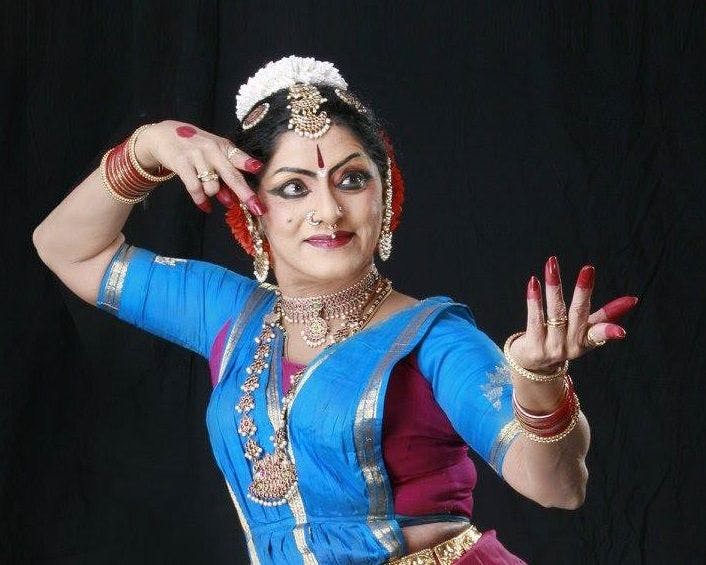The purpose of Parivritta trikonasana is to stretch the muscles of the back of the thigh (hamstrings) and help the hip joints (adductor muscles) to facilitate adavus.
Right-hand Parivritta trikonasana helps in providing a wider range of movements to the vertebral column. This is indispensable in any movement that needs quick reflexes in sideward and backward turns. Parivritha means encircled and trikona means triangle
How to do?
Start with Thadasana. Keep the feet around four to five feet apart from each other with the toes facing the front. Raise the hands stretched to the sides. Now hold the right toe with the left hand twisting the back towards the right. The right hand should point upwards almost in line with the left.
Keep the legs straight. After around five breaths in this position, resume the straight position. Do the whole thing on the left side holding the left toe with the right hand. Then come back to the straight position still keeping the legs wide apart. Bring the legs together to the Thadasana.
Breathing:
While raising the hands, inhale. Exhale while making a twist and moving the hands towards the specific toes. Keep inhaling and exhaling while staying in this posture (five breaths) – slow and as deep as possible. After five breaths, come back to the straight position while inhaling.
Start exhalation and twist towards the left and move the right hand towards the left toe. Stay in this posture for five breaths. While inhaling, come to the straight position. Now resume the Thadasana while exhaling.
In Mukhthayi adavusParivritta trikonasana helps in mukthayi adavus where the hands have to be taken towards the back describing a spinal twist. This also helps in nattadavu, egarumettadavu and egaruthattadavu.
A simpler version of Parivritha Trikonasana is Uthitha Trikonasana where the right-hand holds the right toe (when doing on the right side) and the left-hand holds the left toe (when doing on the left side). This does not involve a a spinal twist. This asana is practised before Pravritha Trikonasana as it is relatively easier. The other procedures are the same as in Parivritha trikonasana.
The dancer should keep gazing at the tip of the hand that is facing up and keep the mind relaxed and meditative. This mental state has to be maintained in all asanas.
Write to us at editor@indiaartreview.com

